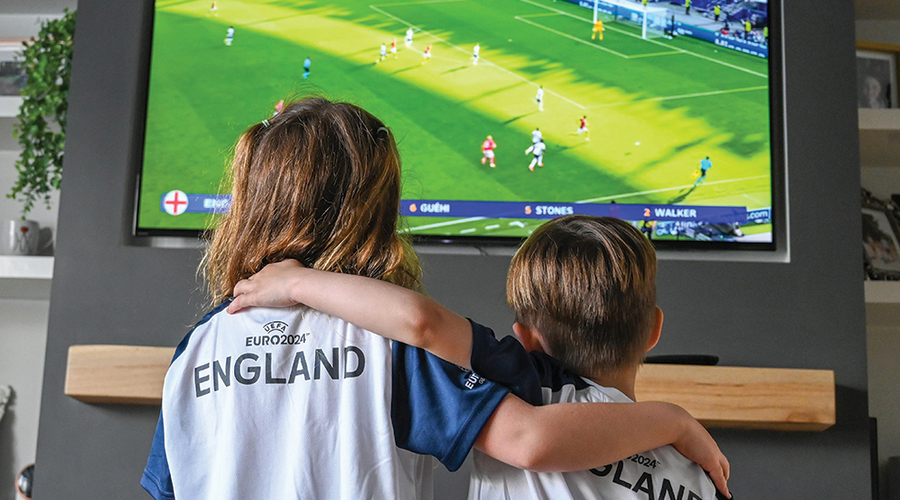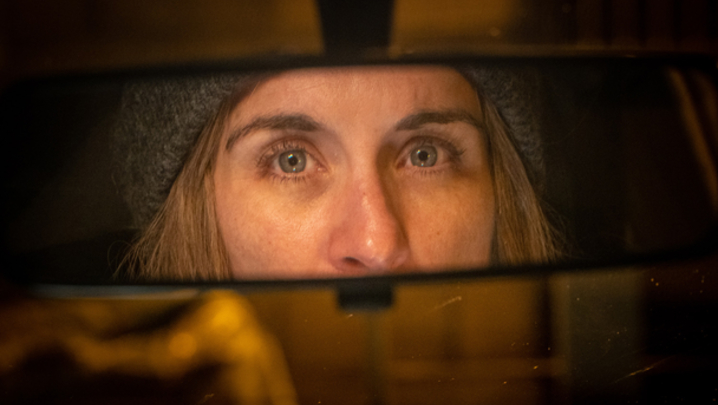Tara Conlan gets to grips with a jittery market as broadcasters face new competitors for ad revenue
TV advertising may once have been a cash cow, the proverbial licence to print money, but as ITV CEO Carolyn McCall reminded the RTS London Convention in September: “Linear advertising is deeply tied to the economy, and it is cyclical. This year is still not easy…but the ad market has recovered. Talking to a lot of my counterparts in Europe… they’re finding it much easier, and they’re all talking about commissioning.”
From the same stage, Channel 4 CEO Alex Mahon said: “We didn’t expect an advertising downturn. Nobody expected a 10% hit – £100m off our top line.” Launching the broadcaster’s annual report in October, she acknowledged that Channel 4 had “seen a stabilisation of the advertising market”.
But the sector is still jittery as instability and uncertainty hit consumer confidence. Will the recent UK budget have an impact? What of conflict in the Middle East and Ukraine? And post-election turmoil in the US?
ITV Commercial Managing Director, Kelly Williams, agreed that the economy “probably has the most influence” over TV advertising. “What the Labour Government did by giving us almost a three-month trail that the budget was going to be tough has been unhelpful for advertisers as well as consumers.”
Williams, who is also Chair of Thinkbox, the commercial TV marketing body, continued: “For lots of brands, advertising is a big investment. When you’re unsure of the wider political environment but you know something’s coming and it’s not going to be great, it probably makes advertisers a bit cautious, as it would do consumers.
“But we’ve also had a tumultuous few years with Brexit, Covid and the cost-of-living crisis. We’re hopeful that, once this government gets going, we might see a bit of stability and growth.”
Williams sees the market as “a lot more stable than last year” and said “that’s pretty consistent across Europe”.
Big programming events also impact advertising; this year, Euro 2024 netted ITV a 17% increase in advertising revenue.
‘This year is still not easy, but the ad market has recovered’
In its annual report, Channel 4 revealed that 2023 advertising revenue – about 80% of its total income – dropped from £1.25bn to £1.14bn, a fall of almost 9%. Online revenues accounted for 27% of revenues. The broadcaster aims to increase this to 50% by 2030 as part of its “fast forward” strategy. According to a note from Enders Analysis, Channel 4’s “digital advertising revenue continues to show strong growth (+9.8%) but was unable to balance the decline in linear”.
The Channel 4 report was delayed due to the general election, and Head of Sales, Victoria Appleby, said the situation now is more positive: “Looking at what’s coming through in terms of categories, supermarkets [and other retail plus purchases for the home] have all done really well this year.”
Enders COO and Director of TV, Gill Hind, agreed that traditional advertisers, such as Unilever, are “putting more money back into TV as a percentage of their budget”, rather than spending it on social media and search. But 2023 and 2024 have been tough for linear advertising: “ITV were better than the market… better than Channel 4 and Sky [last month Sky said its advertising revenue fell 5% to £1.2bn last year] but still [the market was] dreadful. [It] has picked up this year… Channel 4 said they think it’s going to be about flat.”
Hind said: “Nobody really knows yet what will happen for the rest of the year.” This was because visibility has been reduced since the scaling back of early booking deadlines (where advertisers put money in about eight weeks before their booking) during Covid.
Research by Thinkbox is helping TV make its case. Its Profit Ability 2 report stated: “TV delivers 55% of all ad-driven profit, but only accounts for 44% of spend” while “social media receives 13% of spend, but only creates 10% of ad-driven profit”.
Thinkbox CEO Lindsey Clay explained: “If businesses follow the evidence, then commercial TV has a very positive outlook. Study after study shows how TV continues to outperform other forms of advertising. Ad money has flowed into lower-performing, lower-quality forms of advertising,” she said, leading to under-investment in TV. “There are signs, though, that TV investment is being reappraised.”
Williams, the Thinkbox Chair, said that ITV, Channel 4 and Sky are launching a collaboration called Lantern this year, giving advertisers and media agencies a way to measure the impact of their TV advertising by seeing what people do online after viewing a commercial. TV ads, he stressed, generate a memorable emotional response. So “advertising is a competition for memory”.
Digital is valuable to advertisers as it brings more knowledge about who is watching and can provide more personalised targeting of ads. This is part of the appeal of ITVX, which now claims 40 million registered users and provides younger viewers and more precise data measurement about who is watching.
‘Advertising is a competition for memory’
Diversification is also key; whether into branded content or equity swaps for advertising inventory. This involves broadcasters taking a stake in a company in return for advertising space, establishing a strategic relationship between broadcaster and advertiser.
Channel 4 pioneered this approach in 2015 with 4 Ventures and had stakes in 24 companies. These include Vinterior, a vintage furniture company.
ITV has AdVentures Invest, which has about 10 stakes in companies such as custom-fit menswear brand Spoke; in return, Spoke gets advertising across linear and digital.
On the branded content front, Channel 4 set up 4Studio in 2020, and in 2023 ITV launched BE Studio, which makes about £11m of ad-funded shows: 14 are in production this year, including docu-series Champions: Full Gallop, in association with Flutter Group. Channel 4 claims it is innovating with tools that precision-target its 30 million registered streaming users. It was a commercial decision that led the broadcaster to put Hollyoaks on YouTube first, where it increased young audiences 45% year on year.
Free ad-supported streaming TV (Fast) channels have shown the value of targeted demographics, as have specialist interest channels. Horse & Country TV is now a streaming channel on LG Channels and Samsung TV Plus. With about one million horses in the UK, there are enough owners to ensure a loyal audience. Chief Creative Officer Richard Burdett explained: “Our advertising revenue remains almost entirely based around equestrian businesses. Because we are offering an audience that is incredibly targeted and focused, we’re able to achieve cost per thousand dramatically higher than would be the case if we were dependent on the standard advertising market.”
Working with social media influencers to engage brands and audiences is also important. Horse & Country works with some who came to fame via its reality show, Mochara All Star Academy. Burdett said: “The landscape has changed. We’re not going to revert to some golden age of 60-second spots.”
A big question for traditional broadcasters is this: is the income now coming into streamers such as Netflix, as they beef up their advertising offer, entirely new money? Or are they taking existing revenue away from the likes of ITV?
Hind said: “The three major subscription video-on-demand services [Amazon, Disney+ and Netflix] now take advertising and bring with them some high-quality inventory. Their audiences tend to be younger, lighter TV viewers and are therefore attractive to traditional TV advertisers.
“However, the amount of this inventory is still relatively low, with the SVoDs being added to a TV campaign, not replacing TV. It is arguable at this point whether they are bringing more money overall into the market or eating into the broadcasters’ pie. I would suggest a bit of both.”







